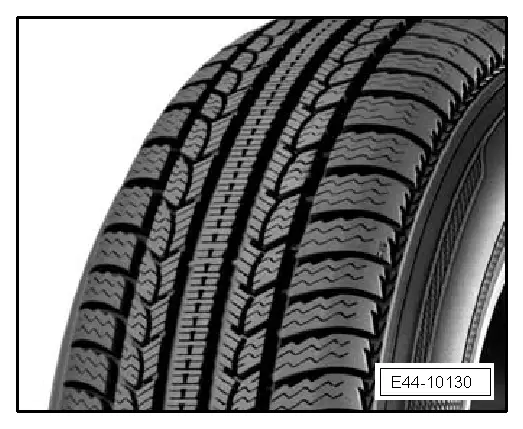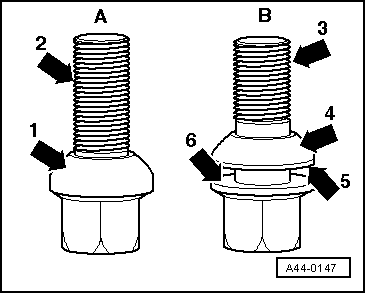| In addition to the already mentioned mixture in the tread the key for traction consists of a series of tread blocks in to which sipes are cut which provide for greater traction in the longitudinal and lateral direction depending on the shape and flexibility. |
| The traction characteristics which these give winter tyres can be reduced as soon as a certain tyre operating temperature is reached. For this reason such tyres normally have lower speed index. |
| As soon as it is no longer necessary to use winter tyres they should be replaced by conventional tyres or summer tyres to reduce the wear, tyre noise and fuel consumption and to maintain the tyre characteristics. |
| These sipes also produce a pressure on the road surface to break up the water layer which can be present below the tyre and thereby prevent aquaplaning 1). |
| Four identical winter tyres should be mounted to ensure best possible dynamic vehicle driving characteristics. |
| 1) When the vehicle is moved on a wet surface the grooves (treads) convey water away from the contact surface between the grooves and the surface. In some cases it may not be possible to convey all of the water present away depending on the type and condition of the tyre and the road surface. In this case the tyre uses contact to the road and the car skids on a film of water. If this happens the steering characteristics and braking force of the vehicle are impaired. This dangerous phenomenon is know as „aquaplaning“ and depends on the vehicle speed. With a certain type of tyre with a certain inflation pressure and at a concrete thickness of the water film the „aquaplaning“ phenomenon occurs at a certain speed known as the „aquaplaning speed“. |
| Regulations for EU approval |
| Directive 2005/11 specifies that the minimum speed index for winter tyres is the letter Q (160 km/h). |
| This directive allows use of winter tyres whose speed index is lower than the maximum speed of the vehicle. |
| In such cases a sticker with a maximum permissible speed must be applied at a point which is easily visible for the driver. |

Note | This sticker should be placed in the driver's field of vision. |
| Tyre pressures for winter tyres |
| The winter tyre pressure should be adjusted to 0.2 bar above the valid tyre pressure for standard tyres, although to a limit of 3.5 bar. |
| Newer generations of winter tyres no longer require an increase in the inflation pressure. |
| The German traffic laws changed as of 1st May 2006. A passage was added which requires such vehicle equipment be adapted to the climatic conditions. This adaptation includes particular installation of critical tyres or installation of slip-resistant elements on the tyres. |
| All tyre sizes specified in the vehicle documents (with corresponding rim combinations) can also be used for winter tyres. |
| The technical data for conventional tyres with speed index letter V or higher also apply for winter tyres → Chapter . |
| The use of winter tyres and the eventual change to the wheel rim and tyre dimensions as a result affects the dynamic qualities. When driving with winter tyres the vehicle speed should be adapted to the new dynamic qualities and the corresponding road conditions. |
| If, in order to fit winter tyres, the vehicle is subsequently fitted with wheel rims different to those mounted at the factory, the following should be taken into account: |
| t
| Wheel rims and nuts are assigned in a specific manner. |
|
|

|
 Note
Note

 Note
Note
